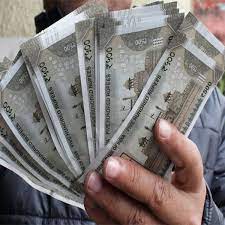Kerala and Punjab, two states operating some of India’s largest lottery systems, are facing fiscal uncertainty due to the government’s proposed GST rationalisation. The proposal suggests increasing the tax on lotteries to 40%, which could significantly affect the revenues of these states.
Kerala, which contributes nearly 97% of the country’s total lottery revenues, currently taxes its state lotteries at 28%. If the reform is implemented, the rate could rise to 40%, creating a substantial fiscal burden. Kerala had budgeted over ₹14,000 crore in lottery revenue for FY26, highlighting the potential impact of the change.
Punjab, another major lottery state, faces a similar challenge. While its revenues are smaller than Kerala’s, they have grown rapidly over the past decade. Lottery revenues now account for 2% of non-tax revenues in Punjab and 0.7% in Kerala, showing their growing importance to state finances.
Over the last decade, lottery revenues across India’s five largest states have nearly tripled. Kerala remains the dominant player, with receipts projected to rise from ₹5,445 crore in 2014–15 to over ₹14,100 crore in 2025–26. Punjab’s revenues increased from ₹70 crore in 2014–15 to ₹250 crore in 2025–26. West Bengal’s revenues grew modestly to ₹75 crore, while Maharashtra has seen fluctuating trends, falling below ₹100 crore in recent years. Goa’s lottery revenues remain relatively small, projected at ₹26 crore in FY26.
Experts note that lotteries are not demand-driven, and consumption is largely unaffected by tax rates. A rise to 40% would mark the second increase for state-run lotteries, which had previously moved from a 12% rate for state lotteries and 28% for private or authorised lotteries to a uniform 28% rate after the 38th GST Council meeting.
The proposed tax overhaul could also impact the online real-money gaming sector, currently taxed at 28%, with potential hikes to 40% possibly stunting industry growth. UPI data shows gaming transactions are a major category, with users spending ₹10,000 crore in July, accounting for 1.4% of total UPI transactions and nearly 3% of top-category volumes.
This proposed increase has raised concerns among experts about fiscal sustainability and the broader impact on state revenues and emerging digital gaming sectors.

